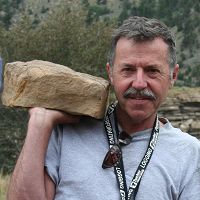Zhang et al., 2013
A New Hydrologic-Morphodynamic Model for Regolith Formation and Landscape Evolution
Zhang, Y., Slingerland, R.L., Duffy, C. (2013)
Abstract EP33A-0858 presented at 2013 Fall Meeting, AGU, San Francisco, CA, 9-13 Dec.
-
Calhoun, Christina, Shale Hills, COLLABORATOR
-
Shale Hills, INVESTIGATOR
-
Shale Hills, INVESTIGATOR
Abstract
Feedbacks between regolith formation and removal and accompanying hydrological processes require a landscape evolution model coupling vertical uplift, soil production by bedrock weathering, and regolith transport with a hydrologic model. Here we present a new version of the Penn State Integrated Hydrologic Model (PIHM) that computes the feedbacks among infiltration, recharge, groundwater and surface water runoff, creation of regolith and its erosion by streams, and downslope movement by tree-throw. The equation set is solved using the semi-discrete finite volume method. The groundwater table evolves during deposition and erosion of regolith and tree-throw. Three non- dimensional parameters govern the behavior of the system: 1) W*=Po/U, the ratio of the weathering rate of bare bedrock to the rock uplift rate; 2) K*=K/UL, the ratio of hillslope diffusivity to rock uplift rate times a system lengthscale; and 3) S*=D/UL, the ratio of overland sediment transport diffusivity to uplift rate times a system lengthscale. Steady- state landforms of an artificial watershed possess convex and smooth channel profiles if K* relative large and S* is small, whereas S* dominant landscapes possess concave and sharp channel and mountain profiles. The set of analysis also reveal that even though the ratios are the same, higher uplift rate accelerates the time to steady state.
Citation
Zhang, Y., Slingerland, R.L., Duffy, C. (2013): A New Hydrologic-Morphodynamic Model for Regolith Formation and Landscape Evolution. Abstract EP33A-0858 presented at 2013 Fall Meeting, AGU, San Francisco, CA, 9-13 Dec..
 This Paper/Book acknowledges NSF CZO grant support.
This Paper/Book acknowledges NSF CZO grant support.
Explore Further



